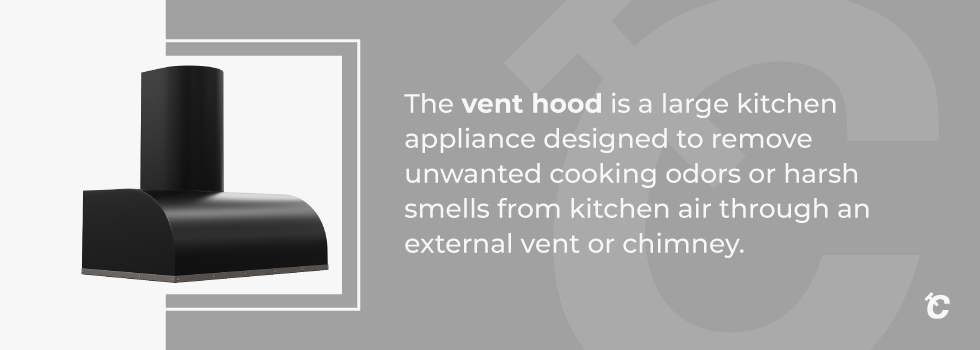
There’s more than one way to refer to an exhaust system for your kitchen.
If you’re new to commercial kitchen ventilation and exhaust systems, it can be hard to see the connections between hoods and ranges. They both have something to do with indoor air quality—and that’s about all they have in common.
A question arises, though: why? What is the difference between these two kinds of kitchen hoods? First, let’s dive into what makes these two different types of exhaust hoods so similar.
What Are a Vent Hood and a Range Hood?
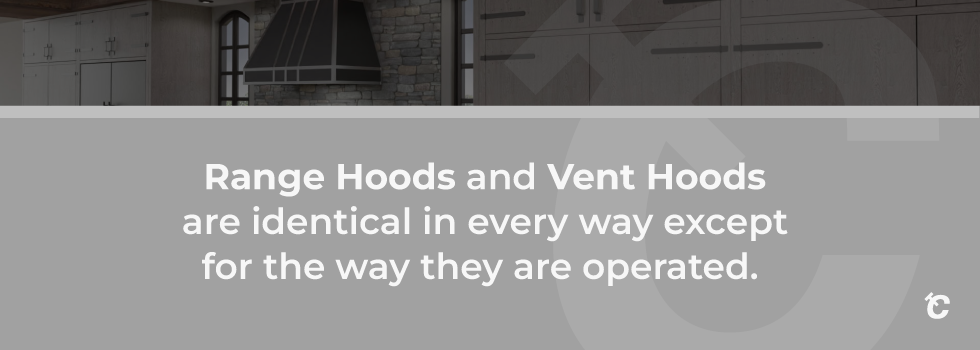
The exact type of hood you use will depend on your kitchen’s design and local building codes, but there are a few different types of standard kitchen hoods you can choose from.
Vent hood
The vent hood is a large kitchen appliance designed to remove unwanted cooking odors or harsh smells from kitchen air through an external vent or chimney.
The most common application for a vent hood is in a kitchen, where it is used as an exhaust fan for things like a stove.
Vent hoods are commonly used as part of the ventilation where kitchen exhaust is drawn outside through a ducted system.
If you seek a range hood for your kitchen but want a vent hood instead – you can still get the same results!
A vent hood can be powered by electricity or gas. The most common types are the wall-mount, island, and built-in models.
The built-in model is the most effective option to maximize your kitchen’s aesthetic appeal with a stylish yet high-quality vent hood.
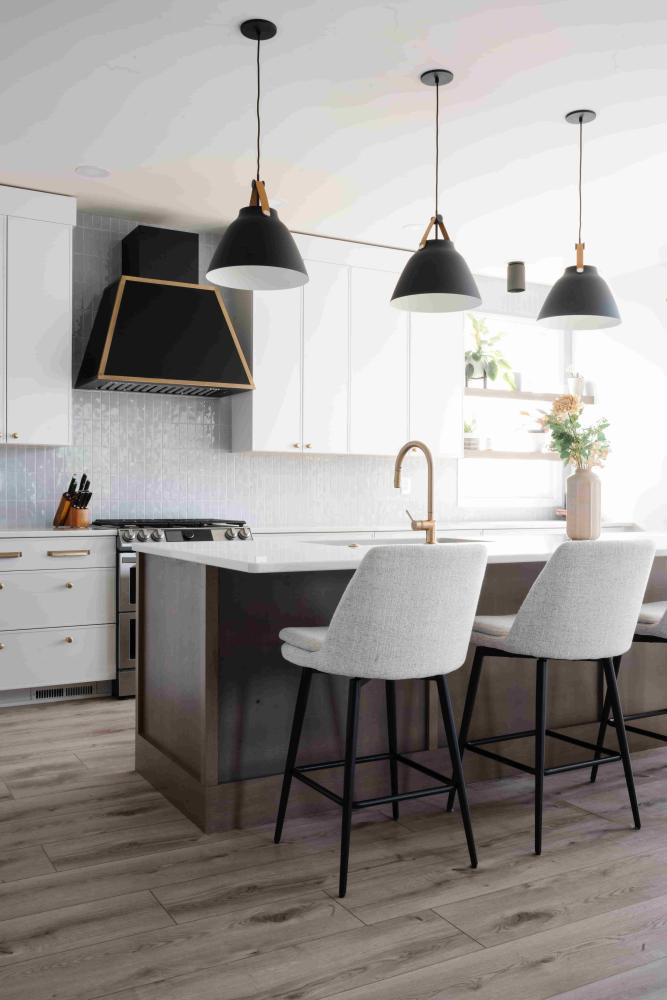
Range hood
A range hood is just one type of vent hood. A range hood is a ducted hood designed to be mounted above a cooking surface, like a stove.
Some range hoods are also called vent hoods, but not all types used for kitchen ventilation are designed to be mounted above a cooking surface.
Standard range hoods can also be electric, but they are most commonly powered by a natural gas or propane supply.
The most common types of range hoods are ducted, wall-mount, and island hoods.
The ducted hood is the most efficient model but requires extended installation work.
The wall-mount hoods are best for smaller kitchens, while the island hoods can be placed anywhere in the room.

Ventilation Hood vs Range Hood: The Same Thing
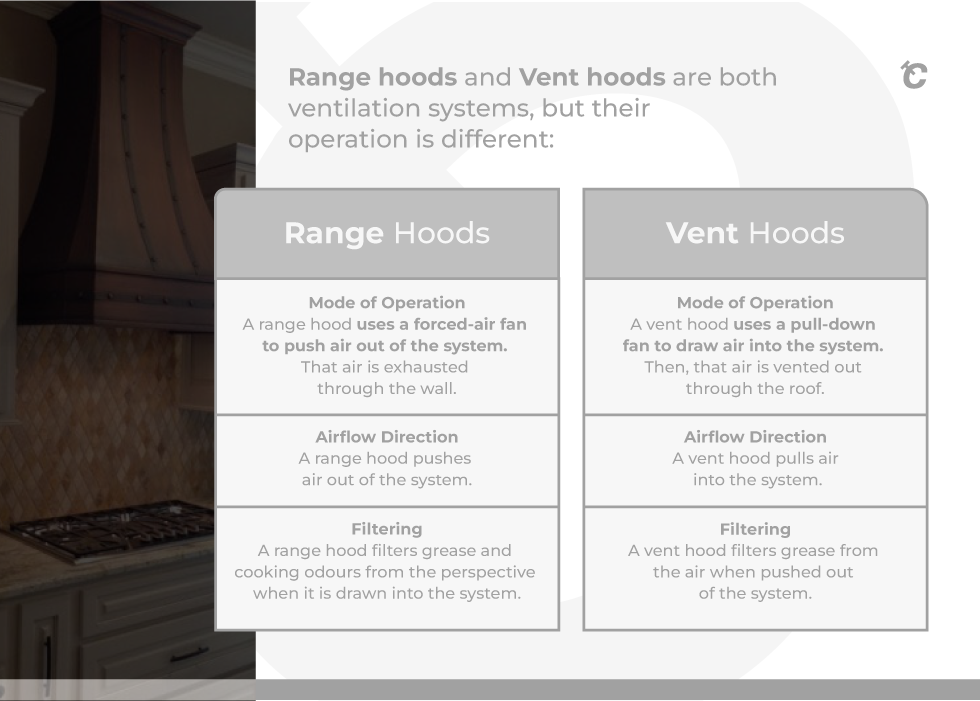
In a commercial kitchen, the distinction between a range hood and a vent hood is insignificant. Nonetheless, these terms have the same definition and are interchangeable when referring to the same system.
So if a contractor asks you what type of hood you want to be installed, you can respond with either term, and they’ll know what you’re referring to.
Generally, a hood is a vent system installed above a cooktop or oven. It’s often referred to as a vent because it removes steam and cooking smoke from the kitchen.
Why Are Hoods and Ranges So Similar?
The simple answer is that they were constructed in such a way as to perform the same function.
Both range hoods and vent hoods are designed to filter out cooking fumes, steam, and smoke particles from the kitchen. They both use fans and charcoal filters (often used in ductless models) to suck up and expel unwanted vapors and smells. Additionally, range and vent hoods are only suitable for indoor use because they are powered by natural gas or propane.
The Two Systems Are Identical in Every Way Except for the Way They Are Operated
Range hoods and vent hoods do the same job. However, they differ in where to put them and how to operate them. So we listed a few similarities and differences below:
Installation method
When you’re in the market for a kitchen appliance that catches airborne particles, the difference between a range hood and a vent hood may not seem like a big deal.
Range hoods are usually installed over the cooking surface, above a stove or range cooker. But they can also be installed beside the stovetop, wall, or cabinets.
In contrast, the vent hood placement is mostly beside the stovetop. This means a range hood is a more versatile option in terms of where you can install it, while a vent hood is more limited.
Venting for ventilation systems
Both appliances are designed to pull air from a larger space and direct it toward a cooking surface. Both use fan power to generate airflow. And both are usually connected to a ducting system that removes air from the kitchen and sends it outdoors.
The difference is that a vent hood is designed to draw air, while a range hood is designed to push air.
Range hoods and vent hoods are both ventilation systems, but their operation is different:
|
|
Range Hood |
Vent Hood |
|
Mode of Operation |
A range hood uses a forced-air fan to push air out of the system. That air is exhausted through the wall. |
A vent hood uses a pull-down fan to draw air into the system. Then, that air is vented out through the roof. |
|
Airflow Direction |
A range hood pushes air out of the system. |
A vent hood pulls air into the system. |
|
Filtering |
A range hood filters grease and cooking odours from the perspective when it is drawn into the system. |
A vent hood filters grease from the air when pushed out of the system. |
Ductwork Variations
Ducting is another key feature that sets apart vent hoods from range hoods. The ducting in a range hood is generally gravity-fed, either from the roof or a wall. It can be directed to the outdoors or a top with a special grease filter.
A vent hood typically has ducting powered by a fan and can be connected to various points in a commercial kitchen.
Ducted range hoods, either with gravity ducting or with a powered duct fan, can be installed in the ceiling, wall, or under a cabinet.
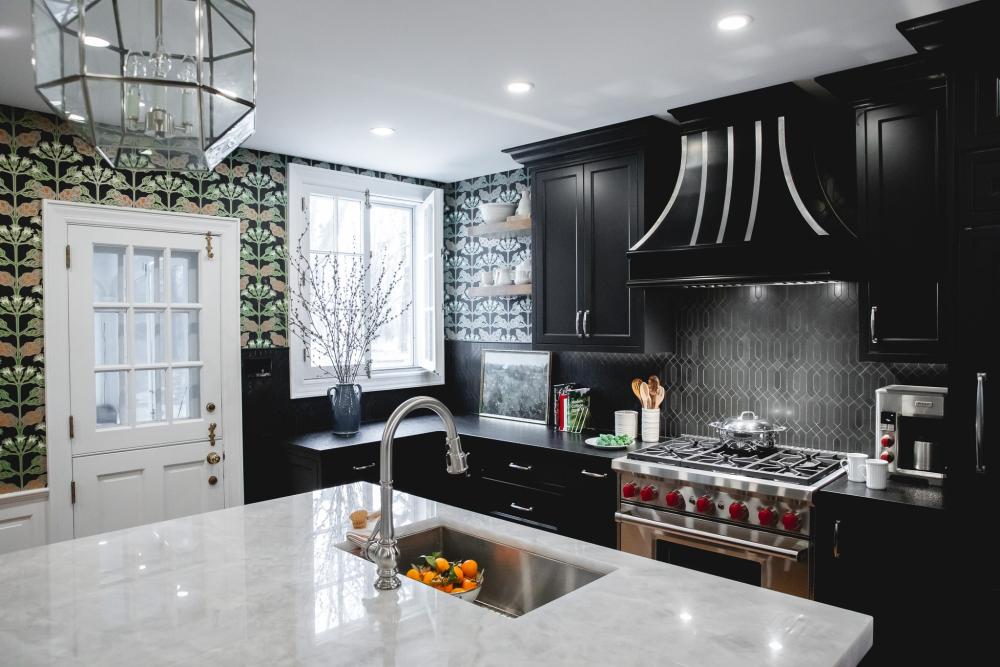
What’s the same about range hoods and vent hoods?
While they may do the job differently, they arrive at the same conclusion:
- They filter and remove odors, steam, smoke, and other airborne particles from the kitchen.
- Range hoods and vent hoods filter grease and other particles from the air using a mesh or filter to catch the particles and a fan to whisk them away.
- Both range and vent hoods are used for indoor cooking and can be installed either above or beside the stovetop.
- It’s common for range hoods and exhaust vents to be installed in the same wall or ducting system, sharing the same air duct.
So Why Call Them Different Things in the First Place?
It all comes down to regional differences and the evolution of the industry. For example, prior to the 1990s, it would have been very rare to see the term “range hood” used in a commercial kitchen.
Since then, however, the food service industry has embraced the term to describe almost any commercial kitchen ventilation system.
This is likely because “vent hood” is a colloquial term more strongly associated with residential ventilation systems.
After all, a range hood and a vent hood are two different ways to describe the same type of exhaust system.
They are both designed to be permanently installed and can be attached to a roof or wall.
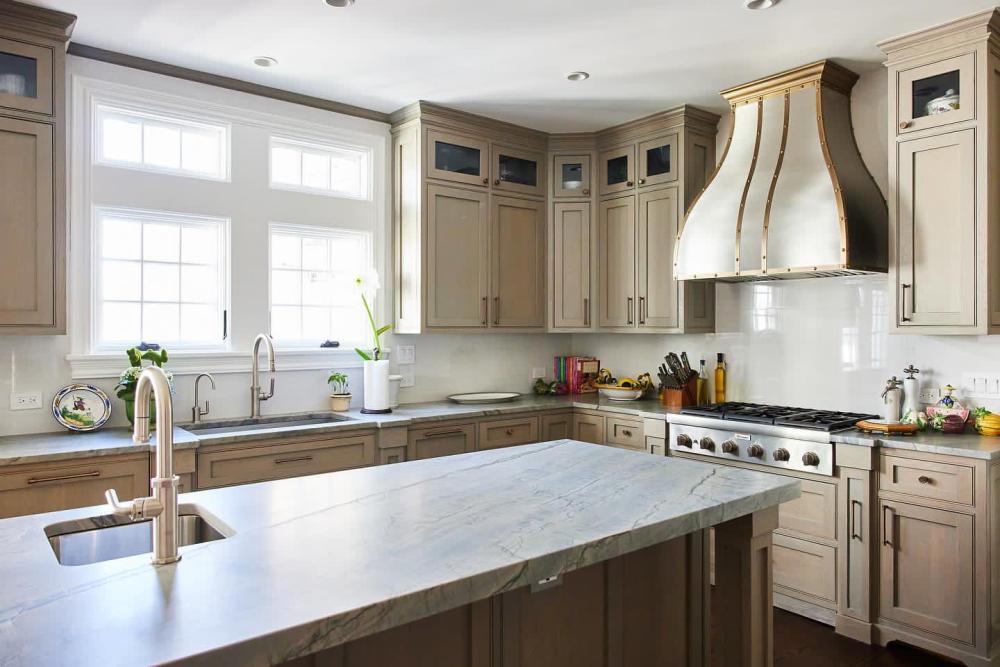
Should You Get a Range Hood or a Vent Hood?
Both range hoods and vent hoods remove excess moisture, heat, steam, and odour from the kitchen.
However, there are a few things you may want to think about before settling on which one to buy.
Cost
Firstly, in terms of cost, although it varies widely based on your individual needs, size, installation, and the quality of materials used to make the hood, a vent hood is usually more expensive than a range hood.
For example, Copper Smith's high-quality range hood costs between $3000 to $4400, while a high-quality vent hood can cost between $4500 and more. But as with many things, you get what you pay for.
Higher-quality hoods often last much longer than lower-quality hoods do. They typically also have user-friendly features (such as a remote control).

Kitchen space
Secondly, you should take your kitchen space into consideration. If you have a smaller kitchen, a range hood might not be the best option to reduce cooking smells and improve air circulation.
Typically, a range hood is situated over a cooking area in the center of the room. This means the air is being pushed up and out of the top of the hood.
Therefore, with a smaller kitchen, this air might not have a way to circulate through the rest of the room. Instead, it might just stay in the kitchen, causing odors to build up.
On the other hand, a vent hood is installed near the floor. It pushes air downward, helping to circulate it throughout the rest of the home.
How often do you cook
In addition, if you cook often, you might find that you need a range hood. The added circulation system helps keep the air around the kitchen clean and fresh.
On the contrary, if you only cook occasionally, a vent hood will be sufficient to keep your home smelling fresh.
Final Words
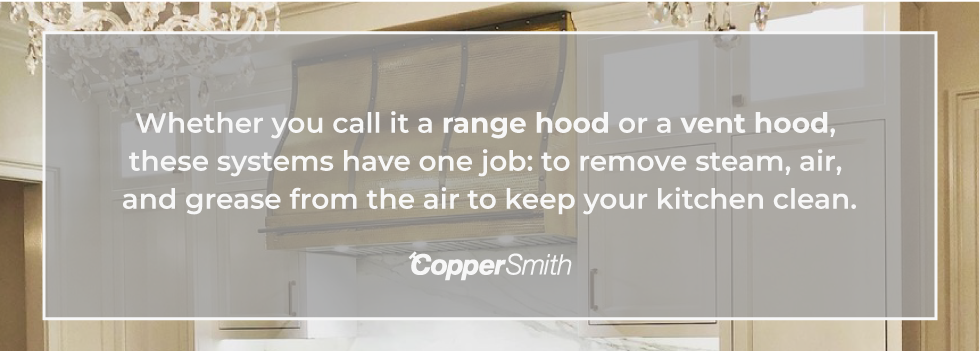
Range hoods and vent hoods are very similar appliances used for indoor cooking.
Whether you call it a copper range hood or a vent hood, these systems have one job: to remove steam, air, and grease from the air to keep your kitchen clean.
So if you’re new to the market and still confused between these two definitions, you can visit experts in the field at World Copper Smith.
We offer different services for those seeking hood for their kitchens, including customized options for your range or vent hood, or any other type based on your preferences.
Contact us today, and we will assist you in determining how to order your unique kitchen range hood!


